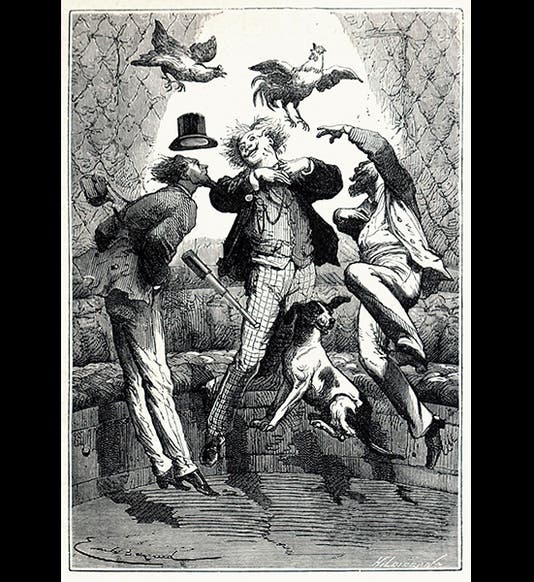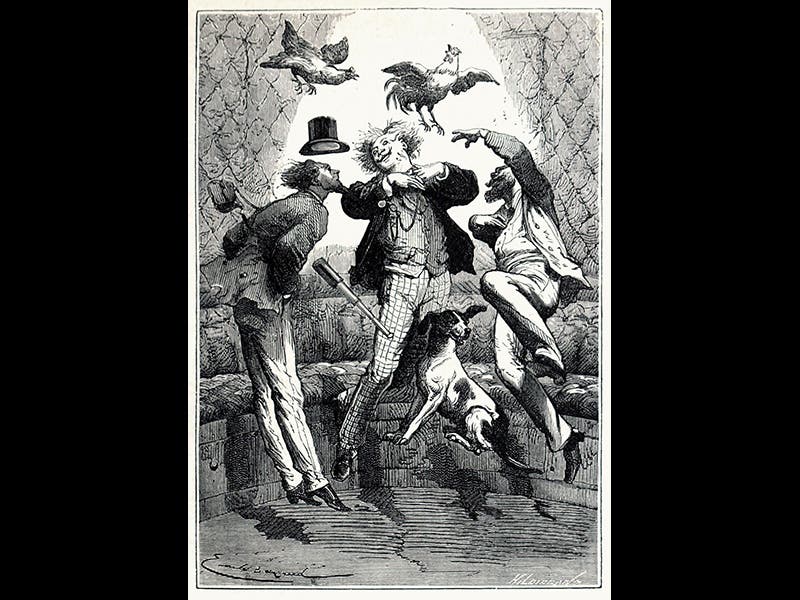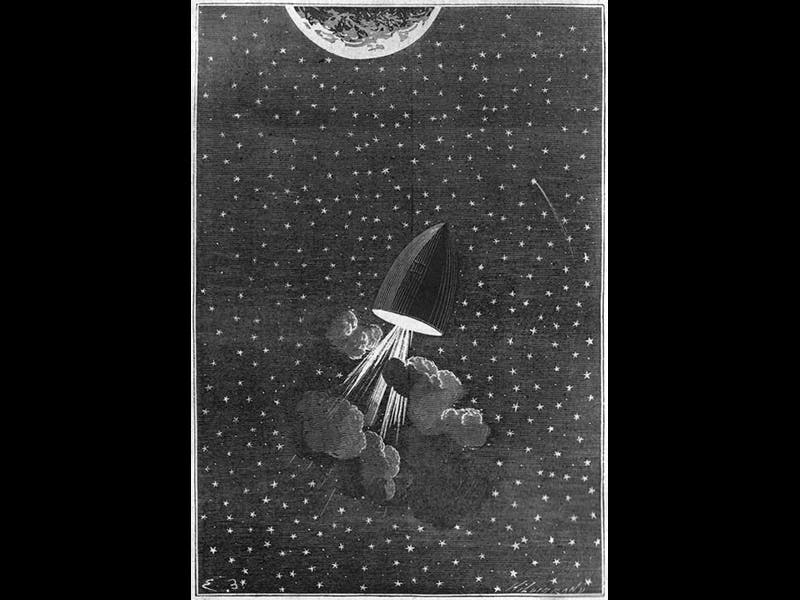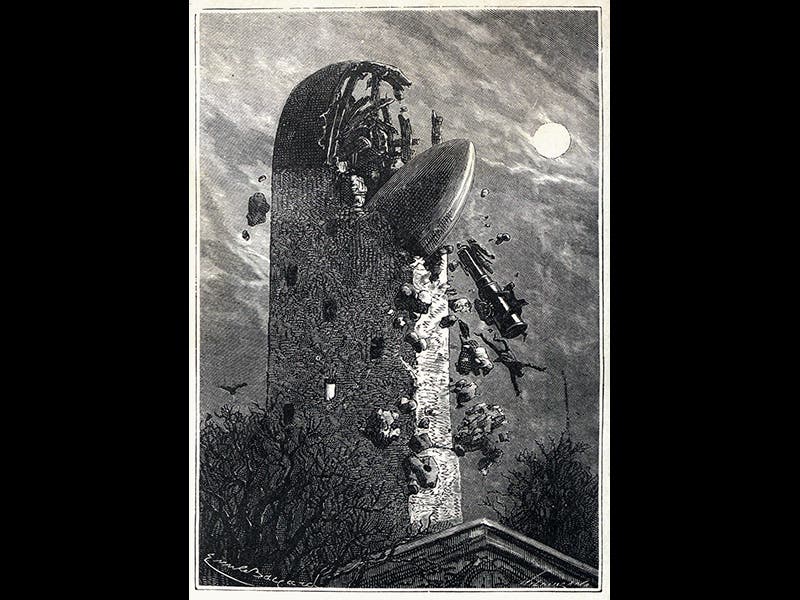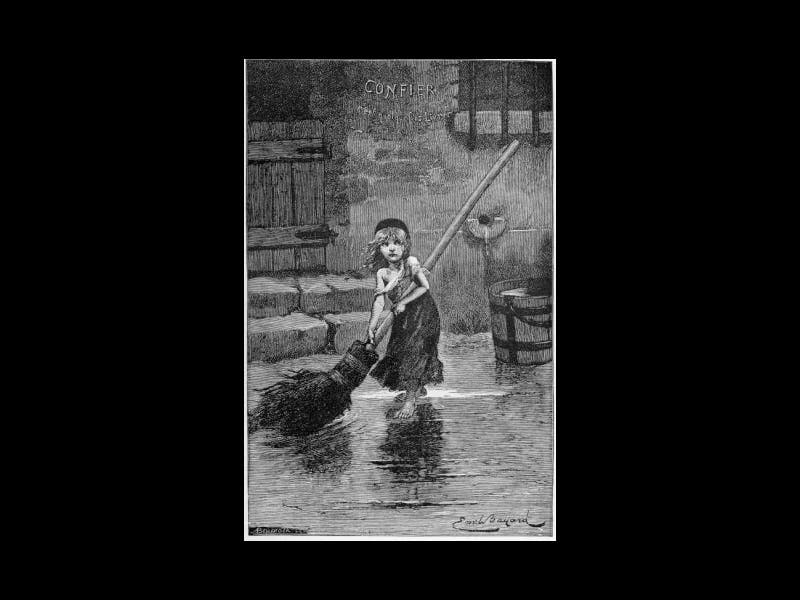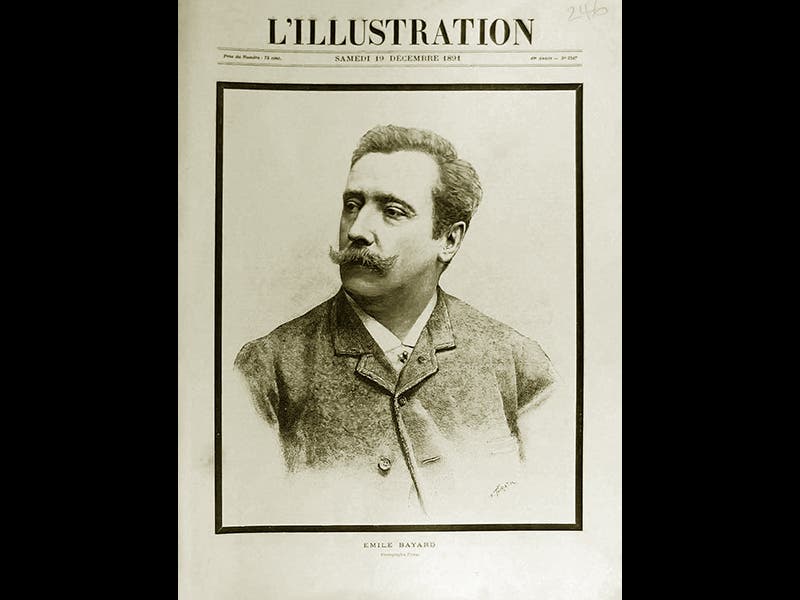Scientist of the Day - Emile-Antoine Bayard
Émile-Antoine Bayard, a French book illustrator, was born Nov. 2, 1837. Bayard did the original wood engravings for the sequel to Jules Verne's De la terre à la lune (From the Earth to the Moon, 1865), which was called Autour de la lune (Around the Moon, 1870). We see above three of those images: one showing the lunar party of three, plus a dog and two chickens, as they achieve weightlessness (first image); another depicting their imagined crash on the Moon, in the mind’s eye of an observer back on earth (second image); and a third showing the trip to the Moon (third image). It is not clear who told Bayard what to illustrate, but he does seem to have been fond of imagined events, as when the leader, Professor Barbicane, discovers that the faculty at Cambridge Observatory has miscalculated their trajectory, and he comments that it would serve them right if the projectile failed to reach escape velocity and crashed back onto the Observatory, as which point Bayard gives us a memorable cut (fourth image).
The year 1870, and the year leading up to it, must have been busy for Bayard, for in the same year that Autour de la lune appeared, Louis Figuier published his seminal book on human prehistory, L’Homme prehistorique (Prehistoric Man, 1870), with wood engravings by Bayard. We exhibited this book in our 2012 exhibition, Blade and Bone: The Discovery of Human Antiquity, along with the English translation of the same year (allowing us to display twice as many of Bayard’s illustrations). You can see three of Bayard’s drawings from the French edition here, and four more, from the English translation, here. Many of these illustrations, such as the prehistoric cave painters, had no precedent whatsoever, and Bayard was in a sense creating an entirely new genre with his drawings.
But for all the charm of his renderings of lunar voyages and prehistoric peoples, Bayard will be forever identified with a single sketch that he did for the original edition of Victor Hugo’s Les Miserables (1865), depicting the unfortunate Cosette, sweeping out a room with her broom (fifth image). The illustration, or a detail from it, was used for the posters, playbills, and media art for both the American and French productions of Les Miserables.
Bayard had his portrait on the cover of an 1891 issue of L’Illustration, an unusual honor for a book illustrator (sixth image).
Dr. William B. Ashworth, Jr., Consultant for the History of Science, Linda Hall Library and Associate Professor, Department of History, University of Missouri-Kansas City. Comments or corrections are welcome; please direct to ashworthw@umkc.edu.

